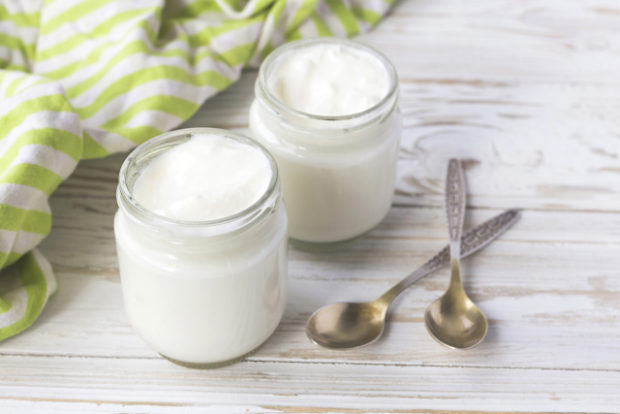
Yogurt is popular in many countries and is packed with probiotics. Image: Dzevoniia / IStock.com
More studies are revealing that eating probiotic foods — which are foods that include beneficial bacteria that can help keep our gut healthy — are linked to a range of health benefits including weight loss, fewer symptoms of depression and anxiety and healthier aging. But although the research might be new, many of these foods have already been consumed in different cultures for centuries; so before you reach for a supplement read on to find some of the different probiotic foods that are available around the world.
Yogurt
Yogurt is probably the most common probiotic food, and is regularly consumed in countries all around the world, although there are various claims about where it originated (Bulgaria and Turkey are popular choices). It is made by fermenting milk with different bacteria, which are left in the yogurt. meaning that eating it is good for our gut.
Sauerkraut
Sauerkraut is fermented cabbage, which is particularly popular in Germany and the Alsace region of France. However, although its name is German it’s believed to have originated in China, where cabbage was fermented in rice wine before Europeans caught on to it. Fermenting the cabbage not only makes it a probiotic food, but it is supposed to be easier to digest this way and full of nutrients such as B vitamins.
Kombucha
Kombucha is a tea which has been fermented with a SCOBY (an acronym for “symbiotic culture of bacteria and yeast”), which is similar to the “mother of vinegar,” and turns the tea into a slightly sour, fizzy drink. It’s the living bacteria in the SCOBY which are said to give kombucha its probiotic qualities. The origins of the drink are again unclear, but it is thought to have come from the Manchuria region of China or Russia. Now however, kombucha has gained popularity in countries such as the U.S.A. and U.K., with many fans even making their own at home.
Miso soup
Japanese miso soup is made from miso — which is fermented bean paste and the source of probiotics — plus vegetables and hot water or a stock. It also contains vitamins and minerals such as B vitamins, vitamins E, K and folic acid. You can drink it just as it is, or beef it up with tofu and vegetables for a heartier meal, and as miso itself is a paste, you can also use it in other ways such as adding it to salad dressings, stews and marinades.
Kimchi
Kimchi is an everyday condiment from Korea which, like sauerkraut, usually consists of fermented cabbage. Its distinctive flavor and the additions of spices and seasonings make it probably more popular for its taste than its health benefits, however, the fact that it is a good source of probiotics is an added bonus for fans. There are hundreds of different kinds of kimchi which use different vegetables (you can use Korean radish, for example, not only cabbage) but it’s easy to find a recipe online if you want to have a go at making your own. NVG
RELATED STORIES:
Three science-backed healthy diets to follow
If you like a pint of India pale ale you might be a sensation-seeking risk taker